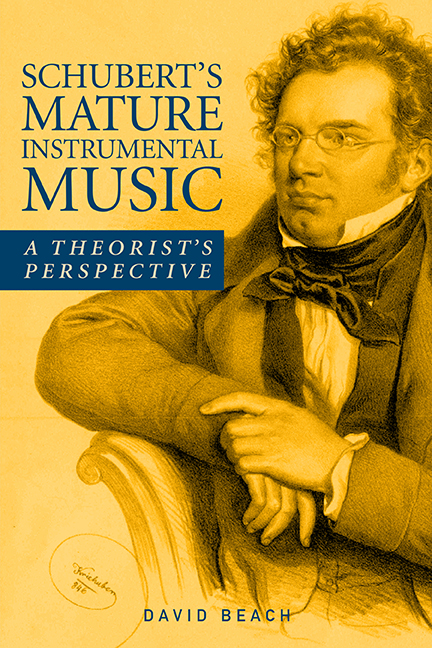6 - Two Piano Sonata Movements
Published online by Cambridge University Press: 10 June 2021
Summary
The subjects of this chapter are the first movements of the Piano Sonata in A Minor (D. 845) and the Piano Sonata in B-flat Major (D. 960). The first of these two was written in the spring of 1825 and published the following year as op. 42, establishing Schubert as a serious composer for the keyboard. From the perspective of form, this movement adheres quite closely to the “classical model” (my type 1 as described in chapter 4) with the modification that there is an overlap between the development and recapitulation sections. There are several other features of this movement that demonstrate items presented in the first part of this book: the interchange, motivic development, and phrase expansion. From a structural perspective, an interesting issue is identification of the structural close. The interpretation presented here suggests that the coda, which normally confirms closure, functions as a gigantic parenthetical digression delaying closure until the very end. The B-flat Sonata, written along with the sonatas in C minor and A major shortly before his death, has become Schubert's most famous and most frequently performed work for piano. This movement is a prime example of the threekey exposition (my type 2), one of Schubert's innovations in the treatment of sonata form. An important feature of this movement, the expansion of the G♭–F motive into deeper levels of the design and structure, was discussed in chapter 3. Another feature not yet discussed is the appearance of tonic harmony in conjunction with the opening measures of the first theme late in the development section. This requires explanation. Also of prime importance to this movement is modal mixture, particularly as it pertains to the interchange of and. But for me one of the most intriguing features of this movement is the change in the musical narrative from relatively stable to unsettled. That is, the frequent changes in register, fragmentation of ideas, and parenthetical digressions at the end of the exposition and later near the end of the recapitulation leave an impression that there is more to be said.
- Type
- Chapter
- Information
- Schubert's Mature Instrumental MusicA Theorist's Perspective, pp. 124 - 147Publisher: Boydell & BrewerPrint publication year: 2017

